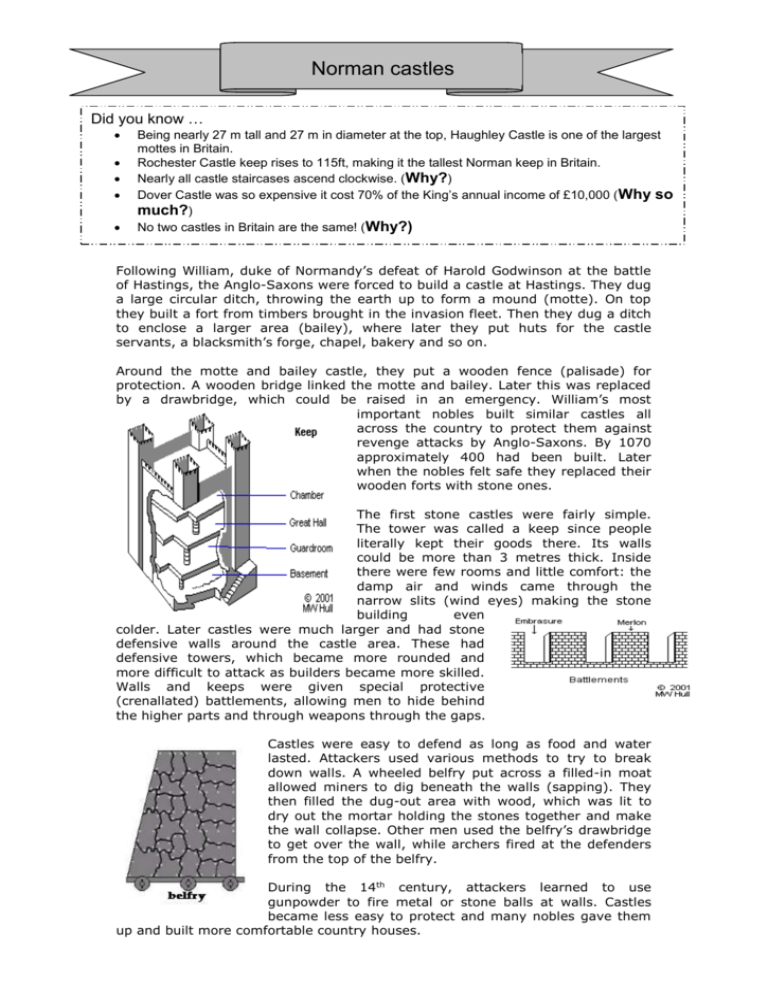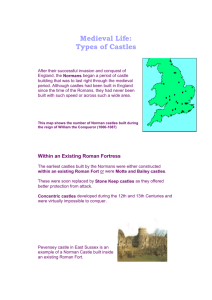Norman castles - reading activity
advertisement

Norman castles Did you know … Being nearly 27 m tall and 27 m in diameter at the top, Haughley Castle is one of the largest mottes in Britain. Rochester Castle keep rises to 115ft, making it the tallest Norman keep in Britain. Nearly all castle staircases ascend clockwise. (Why?) Dover Castle was so expensive it cost 70% of the King’s annual income of £10,000 ( Why so much?) No two castles in Britain are the same! (Why?) Following William, duke of Normandy’s defeat of Harold Godwinson at the battle of Hastings, the Anglo-Saxons were forced to build a castle at Hastings. They dug a large circular ditch, throwing the earth up to form a mound (motte). On top they built a fort from timbers brought in the invasion fleet. Then they dug a ditch to enclose a larger area (bailey), where later they put huts for the castle servants, a blacksmith’s forge, chapel, bakery and so on. Around the motte and bailey castle, they put a wooden fence (palisade) for protection. A wooden bridge linked the motte and bailey. Later this was replaced by a drawbridge, which could be raised in an emergency. William’s most important nobles built similar castles all across the country to protect them against revenge attacks by Anglo-Saxons. By 1070 approximately 400 had been built. Later when the nobles felt safe they replaced their wooden forts with stone ones. The first stone castles were fairly simple. The tower was called a keep since people literally kept their goods there. Its walls could be more than 3 metres thick. Inside there were few rooms and little comfort: the damp air and winds came through the narrow slits (wind eyes) making the stone building even colder. Later castles were much larger and had stone defensive walls around the castle area. These had defensive towers, which became more rounded and more difficult to attack as builders became more skilled. Walls and keeps were given special protective (crenallated) battlements, allowing men to hide behind the higher parts and through weapons through the gaps. Castles were easy to defend as long as food and water lasted. Attackers used various methods to try to break down walls. A wheeled belfry put across a filled-in moat allowed miners to dig beneath the walls (sapping). They then filled the dug-out area with wood, which was lit to dry out the mortar holding the stones together and make the wall collapse. Other men used the belfry’s drawbridge to get over the wall, while archers fired at the defenders from the top of the belfry. During the 14th century, attackers learned to use gunpowder to fire metal or stone balls at walls. Castles became less easy to protect and many nobles gave them up and built more comfortable country houses.






